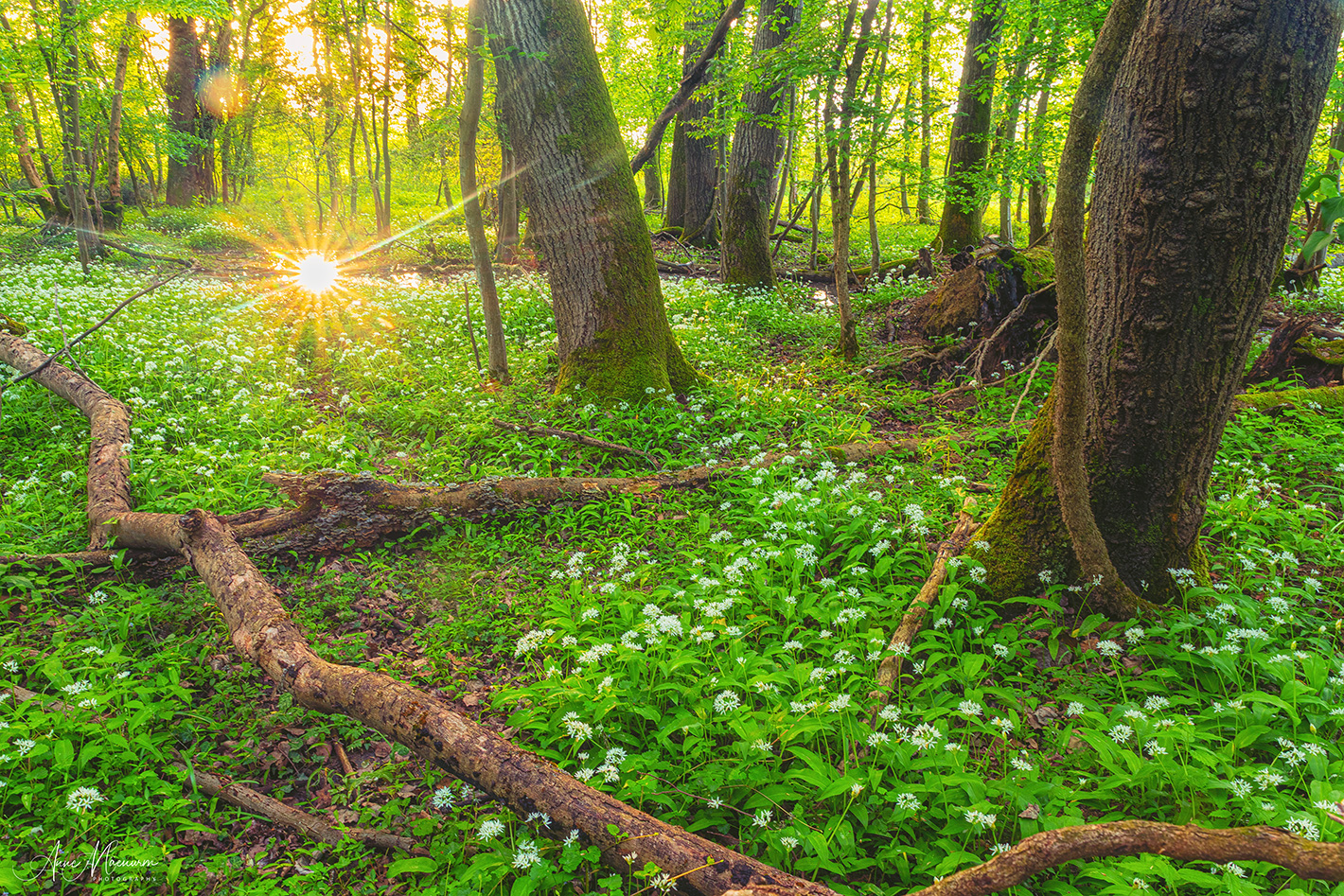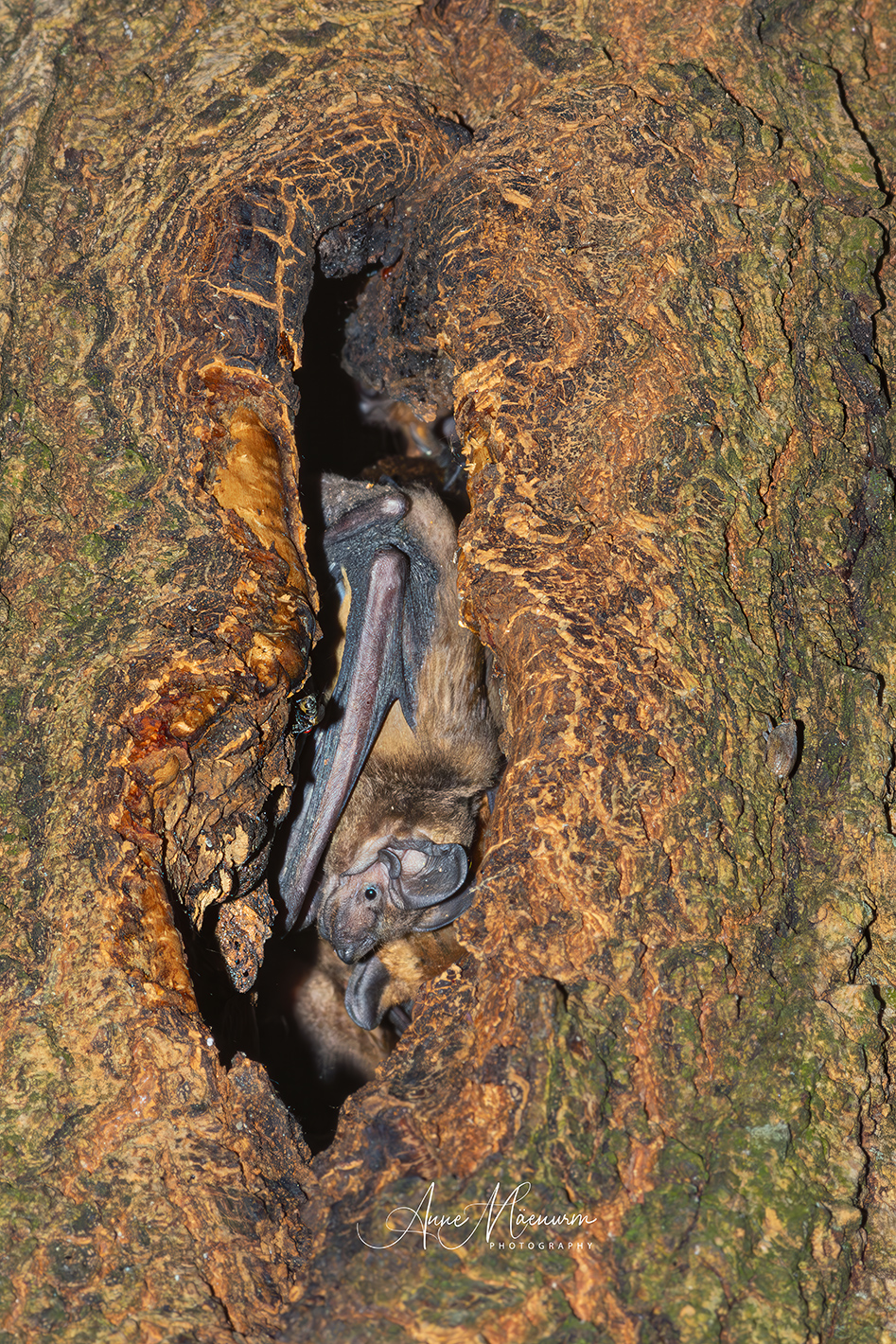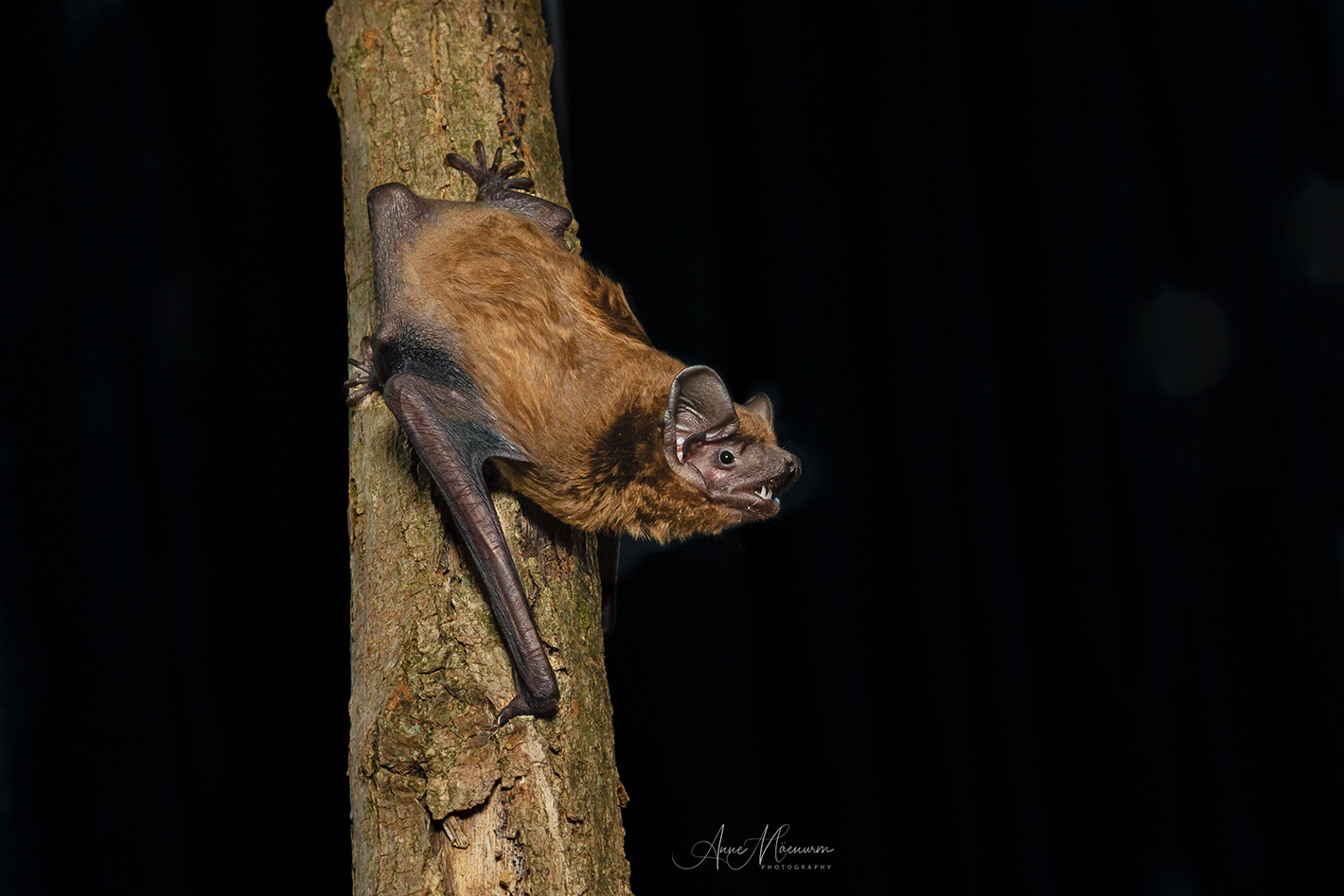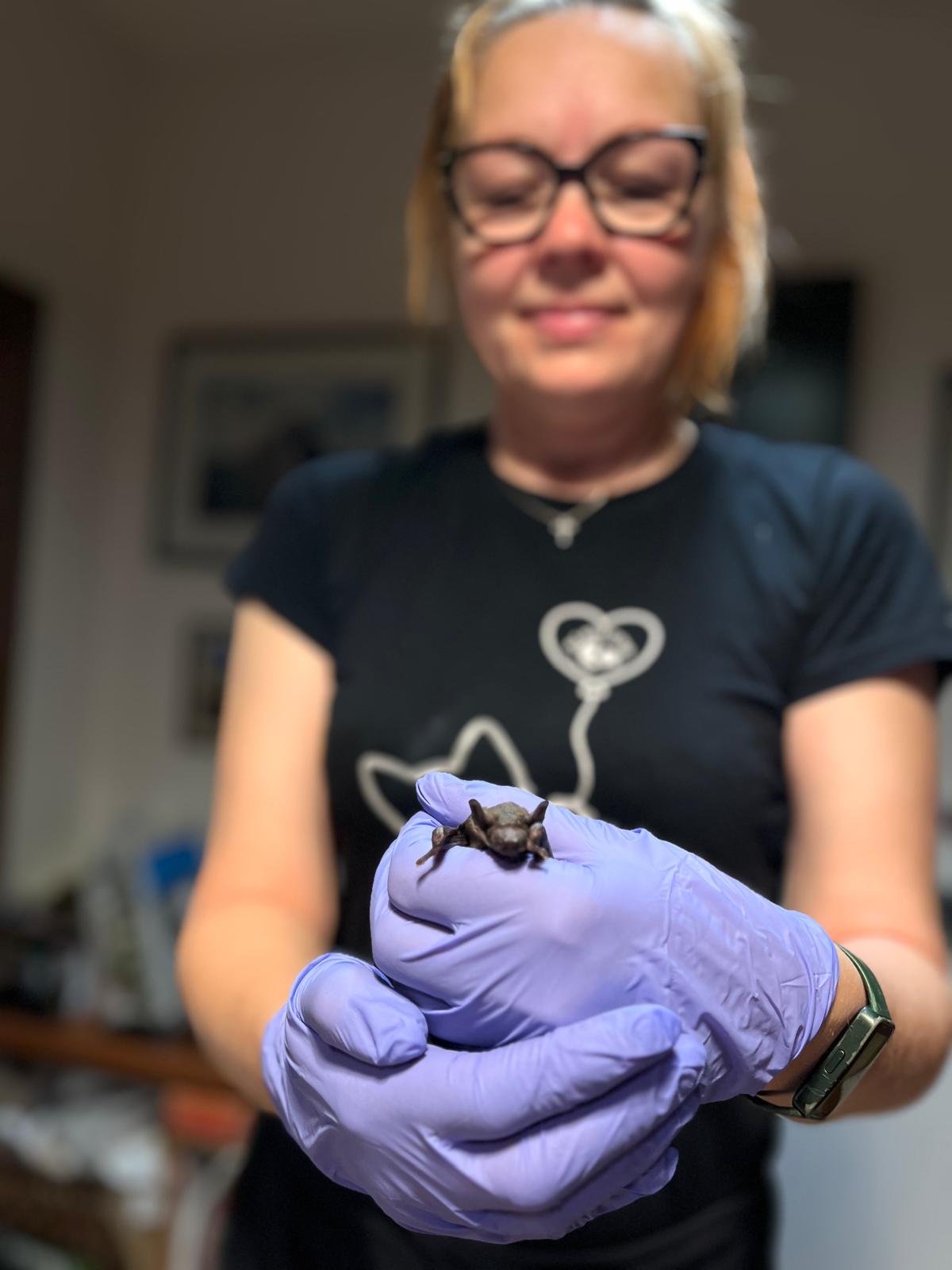
Sometimes, choosing to stray from a familiar path and take a new one can lead to unexpected discoveries. This is precisely what happened to nature photographer Anne Mäenurm while capturing images for her book on the lowland forests of Friuli Venezia Giulia, entitled “Silva Lupanica”.
Leaving a forest at dusk and opting for an unfamiliar trail instead of a well-known one might seem unwise, yet this very decision allowed Anne to witness a remarkable sight: a multitude of bats emerging from a tree, embarking on their nightly hunt.
These were no ordinary bats. With a trained eye, Anne identified them as Nyctalus lasiopterus, commonly known as the Giant Noctule.

This species is listed as endangered and was previously thought to only pass through Italy. The discovery of a colony in Friuli Venezia Giulia—consisting of hundreds of individuals who had arrived to give birth and rear their young—was a sensational find at the European level, leaving researchers both astonished and exhilarated. Even more extraordinary was the revelation that the Giant Noctule shares its nesting sites with the more widespread Nyctalus noctula or Common Noctule.

Anne explains that the unique characteristics of this woodland created ideal conditions for the Giant Noctule to find suitable nesting sites. The forest, privately owned, had been left untouched for many years, allowing nature to manage itself—as it does best. Fallen, large old trees, a dense and disorderly undergrowth, and a total absence of human interference—save for Anne, who knows how to enter such delicate environments without causing harm—have made it an ideal haven not only for bats but for the rich biodiversity of this increasingly fragmented and fragile ecosystem. It was Anne who explained the ecological value of the forest to the owner, just as he was preparing to carry out what is often called "clearing", revealing to him the hidden beauty and importance of the site. Thanks to these precious chiropterans and to protect them, the forest was officially designated the 39th Biotope of Friuli Venezia Giulia under the name “Bosco di Pradiziolo”, with the owner’s full agreement.
The area is now under legal protection, and human activity is limited to scientific research. Even surrounding agricultural zones must adhere to new guidelines that prohibit the use of pesticides and chemicals, thereby improving environmental conditions not only for bats but for biodiversity as a whole.
This discovery led to a fruitful collaboration between Anne Mäenurm and Dr Danilo Russo of the University of Naples Federico II, one of the foremost experts on this species. In addition to her photographic work, Anne now visits the forest daily—particularly in spring—to collect data including temperature, humidity, movements, vocalisations, and guano samples for genetic analysis. For the first time, this allows for an in-depth study of Giant Noctules.

Some findings suggest that the presence of bats significantly reduces the number of harmful agricultural pests, as these insects are part of their natural diet, thereby decreasing the need for chemical treatments. Moreover, bats are sensitive bioindicators: their presence is a sign of a healthy environment.
They are highly social animals, often forming colonies of 30 to several hundred individuals. At night, they can travel up to 130 kilometres in search of food. While mothers hunt, other bats remain behind to care for the young. Half of the bats identified in the Pradiziolo woodland stay throughout the year, while the other half migrate in the summer—their destination is still unknown. Research on this behaviour is ongoing.
Unfortunately, global warming also threatens this species. Forest-dwelling bats roost in tree cavities, and until the young are capable of flight, they wait inside for their mothers to return and nurse them. Rising external temperatures—and consequently those inside the cavities—are causing the death of many pups who are still unable to regulate their body temperature.
Bats, the only flying mammals, are shrouded in myth and legend. In some African traditions, they ward off evil spirits; in China, they symbolise good fortune; in Mesoamerican cultures, they are associated with fertility. In the West, however, they are often regarded as omens of misfortune or associated with evil, partly due to the influence of vampire tales such as Dracula, which have perpetuated harmful myths. Of the 1,400 bat species worldwide, only three feed on blood—and only the blood of animals, not humans—all of which are native to Central and South America. If one of these small creatures enters your home, the best response is to open a window and allow it to exit calmly—there is no need to panic or shout, as this will only frighten the animal. It will certainly not become entangled in your hair—another common myth to debunk.
In Italy, bats are protected under national law. If you find one on the ground or in difficulty, handle it with the utmost care—wearing gloves—and place it in a shoebox lined with a paper towel to soften the base. Close the box and contact the Bat First Aid Centre at the emergency number +39 339 2262299. Volunteers will then take care of the animal.
Bats play a crucial ecological role in pollination, pest control, and seed dispersal. However, they face increasing threats from habitat loss and fragmentation. A key factor in their survival is the availability of safe roosting sites where they can seek refuge and rear their young. Forest islands within agricultural landscapes—such as the Pradiziolo Biotope—are therefore essential to their conservation. Fortunately, the timely discovery of their presence in this woodland enabled its protection before any human intervention could cause irreparable harm.
The discovery and ongoing work of photographer Anne Mäenurm have made a significant contribution to the understanding of the Giant Noctule. Her efforts lay the groundwork for future conservation initiatives—fulfilling the dream of any nature photographer devoted to the wild.

